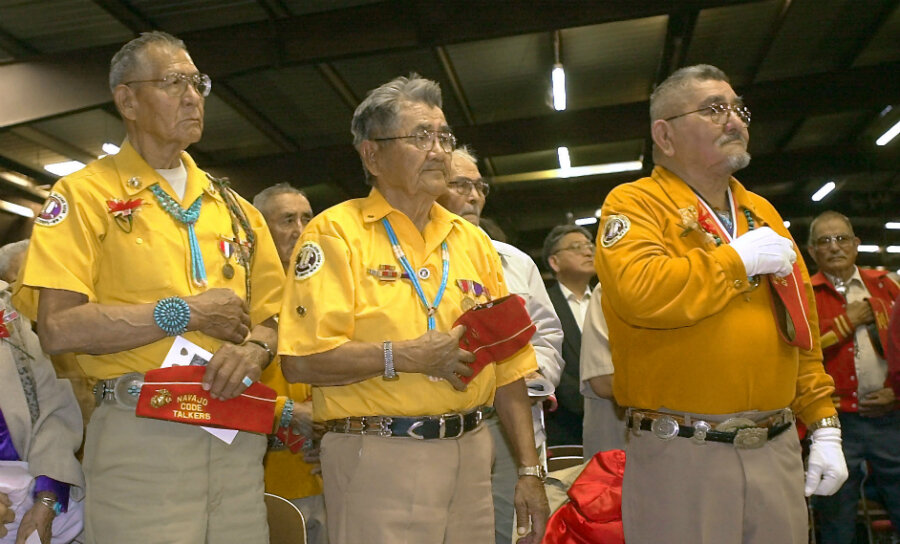Navajo code talker is honored as a 'warrior'
Loading...
Joe Hosteen Kellwood, who died on Monday at the Veterans Hospital in Phoenix, was a Navajo code talker with the 1st Marine Division during World War II.
While he saw combat at Cape Gloucester, Peleliu, and Okinawa, Mr. Kellwood's main role in the war was as one of more than 400 Navajo code talkers who took advantage of their complex and little-known language to help the US military transmit messages that the Japanese could not decipher.
"Kellwood served with distinction in the 1st Marine Division as a Navajo code talker, ultimately helping lead the Allied forces to victory in World War II," said Arizona Gov. Doug Ducey in a statement. "Let us never forget the countless contributions that code talkers made to our state and our country."
While Kellwood was punished for speaking Navajo at the military-run Apache reservation grade school he attended, his language skills saved countless lives after he joined the Marines. Prior to enlisting he had never heard of the secret program that used Navajo codes to trick Japanese intelligence, but he was soon singled out for the operation.
Kellwood and his fellow Navajo code talkers trained at Camp Elliott near San Diego, learning Morse and Navajo code, as well as how to use the radio. Navajo was chosen because its syntax and tonal qualities are so complicated that only a native speaker could understand it, and it has no written equivalent.
"I studied on my own at night," Kellwood, told the Veterans Interview Project. "You had to memorize all the words at the time, 211 words. They were long words. I spelled it. I learned."
The vocabulary lists were complicated, more than 600 terms were developed by the end of the war that relayed battlefield tactics and strategy to the Marshall Islands, Saipan, and Iwo Jima, among other islands.
"Even if [an enemy] catches all of the words, he will not understand it," Keith Little, a former United States Marine and Navajo code talker, told The Christian Science Monitor following a Veterans Day ceremony honoring code talkers in 2009. "And if they manage to translate it, it would not mean anything."
For example, the Navajo word for "turtle" meant a tank, while a dive-bomber was a "chicken hawk."
The entire code-talking program was classified until 1968, and its heroes were forbidden from talking about their work. In 2001 the remaining code talkers received Congressional Gold Medals, nearly 60 years after the code's creation. The few surviving code talkers are eager to make sure their story is not forgotten after so many years of silence and nonrecognition, according to Little. Hollywood's effort at telling their story, "Windtalkers," had little basis in fact.
Kellwood passed away three days after his older brother, Roy, another WWII veteran who served with the US Army Air Forces in Europe.
"They were Navajo warriors – that's what everyone calls them," Roy Kellwood Jr., told CNN. "They defended the country, not just for the US, but for the Navajo nation and the Navajo people."








